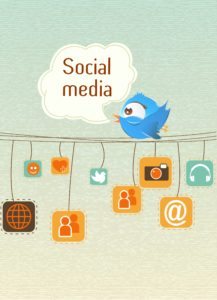Quick links, bringing you great articles on writing from all over the web.
Fair or not, people will judge your book by it’s cover, and if it has been a while since you looked at your cover perhaps it is time for a refresh. Roz Morris at Nail Your Novel has some great reasons why you should redesign your book cover and tips to make the redesign work even harder for you.
~ * ~
Checklist for redesigning your book cover – and maximising the marketing opportunities

I recently changed the covers of my Nail Your Novels … and got myself a nice long to-do list as a result. But as well as refreshing the look of the books, a redesign is also a chance to smarten up the covers’ marketing potential. Here’s how.
Don’t miss the opportunity to tweak your sales wording
I’ve already blogged about changing the cover design to target readers effectively (the last time I changed the cover of book 1, as it happens). But revising the book doesn’t have to stop at the visuals. Since you published the title, have you had any standout reviews? Work them into the redesign – on the front as a teaser or the back as part of the sales blurb.
Indeed, could you add punch to the back cover copy? Sometimes reviewers sum up our books much better than we can ourselves. A reader who really got the book might have written you a brilliant logline. Search your reviews in case.
If you have an ‘about the author’ paragraph on the back, should you update it? Perhaps you’ve published more books, or won a prestigious award.
What about your author photo? My Nail Your Novels had three different author photos according to the years they were published (and the hue of my hair), but with this reboot I decided to use a new image to make them look more current and uniform.
I also found I had room on the back for miniatures of the other books in the series – a good visual way to let readers know they’re part of a set.
~ * ~
If you liked this article, please share. If you have suggestions for further articles, articles you would like to submit, or just general comments, please contact me at paula@publetariat.com or leave a message below.

 Of all the social networks you can use to help promote your book, Facebook might have the most potential for a few reasons.
Of all the social networks you can use to help promote your book, Facebook might have the most potential for a few reasons.



 Twitter has hundreds of millions of daily users worldwide. It is both a way to engage one to one with people and a way to broadcast information. Writers use it every day for both. Search for #amwriting on Twitter and you will see some of the activity writers are engaging in on Twitter. Some of it is broadcasting. Some of it is looking for engagement.
Twitter has hundreds of millions of daily users worldwide. It is both a way to engage one to one with people and a way to broadcast information. Writers use it every day for both. Search for #amwriting on Twitter and you will see some of the activity writers are engaging in on Twitter. Some of it is broadcasting. Some of it is looking for engagement.

 If the book market made sense it wouldn’t be so much fun. This week we are celebrating a 0.4% rise in physical book sales and an 11% drop in consumer e-book sales.
If the book market made sense it wouldn’t be so much fun. This week we are celebrating a 0.4% rise in physical book sales and an 11% drop in consumer e-book sales. Today’s guest post is the first in a series about growing an email list, by author
Today’s guest post is the first in a series about growing an email list, by author 